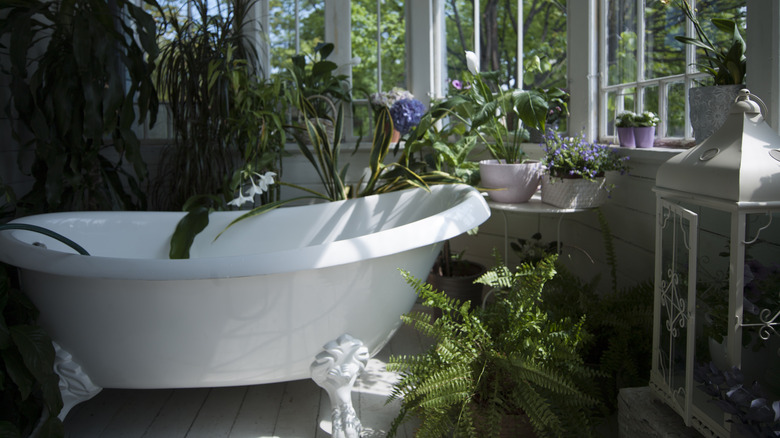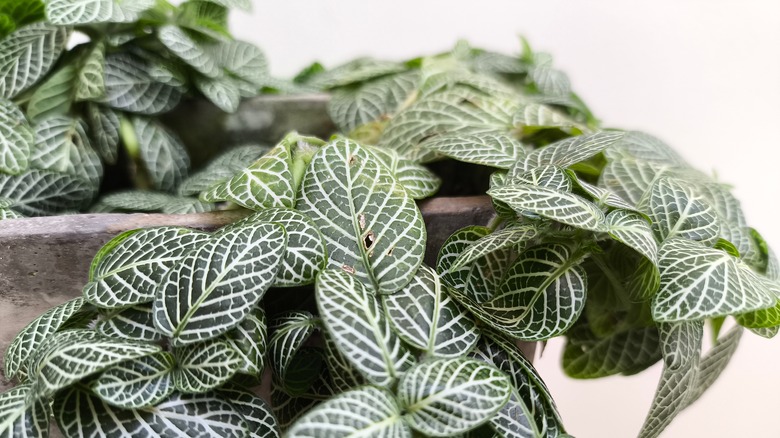The Indoor Houseplant That Thrives In Your Bathroom And Is Easy To Grow
If you want your houseplants to look straight out of an HGTV show, it's vital to choose the right spot for each plant. For example, some plants require direct sunlight, while others will scorch under those conditions. If you're looking for the perfect plant to thrive in your humid bathroom, look no further than a nerve plant.
Nerve plants (Fittonia albivenis) are creeping herbs native to the moist, humid rainforests of South America. They have dark green leaves with white veins or sometimes colorful red, pink, or purple veins. They typically stay small in size, so they're easy to tuck into a nook and also work well in hanging planters. These plants are popular enough that they're easy to find at home and garden stores.
Mimicking the nerve plant's native conditions can help it stay healthy indoors, and your bathroom is likely the most rainforest-like room in your home. Each time you take a bath or shower, it increases the humidity in the space even more. Nerve plants naturally thrive under these conditions, making them one of the best indoor plants to keep in your bathroom.
Nerve plant care 101
Nerve plants appreciate average room temperatures and medium to high humidity, so they will do well in your bathroom without any special modifications. Though easy to grow, they still require proper maintenance to stay in good condition. The best spot for your nerve plant is a few feet away from an east-, west-or north-facing window. Medium to bright light is best, but it can tolerate low light (and fluorescent lights work well too). Just avoid direct sunlight, or it may scorch the leaves. If your nerve plant gets leggy, it likely needs brighter light.
Use a well-draining potting mix for your nerve plant and water it around twice a week or when the top inch of the soil is dry. The plant will visibly wilt when it gets too dry (and then come back upright after it gets water), so you'll know when you've let too much time pass. If the leaves turn yellow or the soil is soggy, on the other hand, overwatering can be the culprit. When in doubt, use a moisture meter to avoid accidentally overwatering or underwatering your nerve plant, and try to stick to a consistent schedule. When you see the roots start to grow out of the drainage holes at the bottom, it's time to repot.

